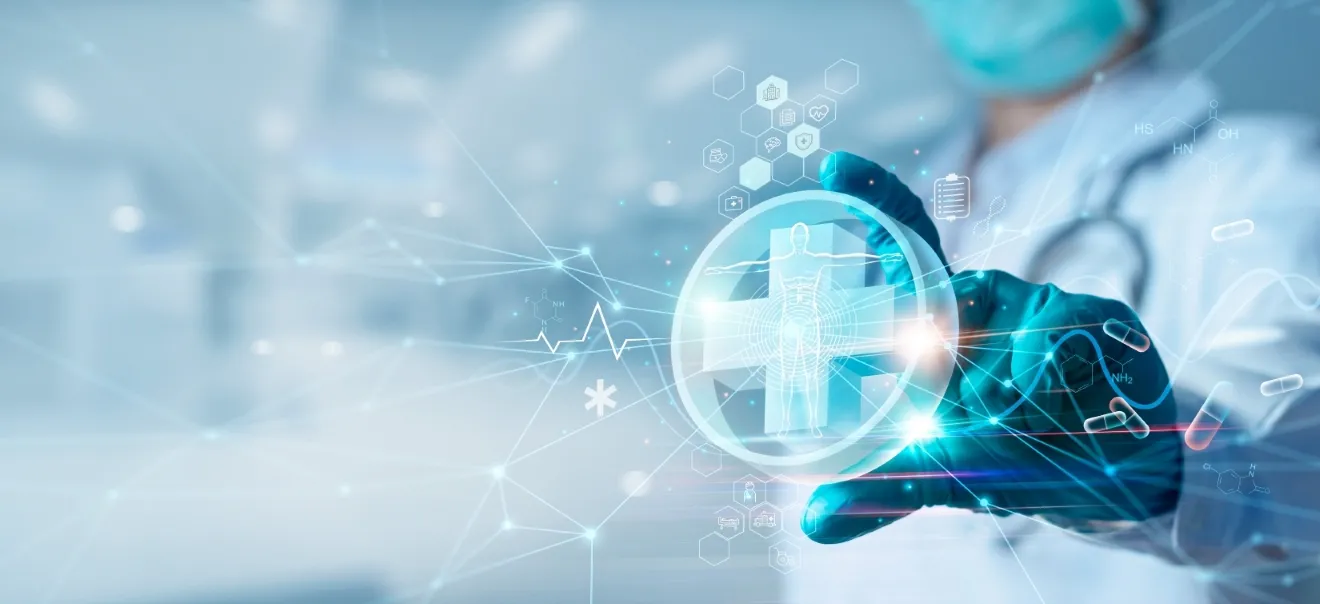Neurostimulation Devices Market 2025: Comprehensive Outlook and Growth Forecast
The neurostimulation devices market is rapidly evolving, driven by an increasing demand for advanced therapies targeting neurological disorders. These devices deliver controlled electrical impulses to nerves or brain regions, helping manage chronic pain, epilepsy, Parkinson’s disease, and other neurological conditions. As we approach 2025, the market is witnessing strong growth fueled by technological breakthroughs, wider clinical acceptance, and expanding applications across diverse patient populations worldwide.
Understanding the dynamics of this market is crucial for healthcare stakeholders, investors, and manufacturers aiming to capitalize on emerging opportunities. This report outlines the key market drivers, innovations, regional trends, and strategic insights shaping the neurostimulation devices landscape in 2025.
Key Market Drivers
Several critical factors are propelling the growth of the neurostimulation devices market:
- Rising Prevalence of Neurological Disorders: Aging populations and lifestyle changes have led to a surge in chronic neurological diseases, increasing the demand for effective treatment alternatives.
- Limitations of Conventional Therapies: Many patients experience inadequate relief or severe side effects from pharmacological treatments, driving a shift towards neurostimulation as a safer and more targeted approach.
- Increasing Awareness and Clinical Acceptance: Medical professionals and patients are becoming more informed about the benefits of neurostimulation, supported by growing clinical evidence and updated treatment guidelines.
- Personalized Medicine Trend: Neurostimulation allows customization of electrical impulses based on individual patient needs, improving therapeutic outcomes and patient compliance.
- Improved Healthcare Infrastructure and Reimbursement: Expanded access to advanced medical care and supportive reimbursement policies in key markets facilitate adoption and market expansion.
Innovation Driving Market Evolution
Innovation is a cornerstone of the neurostimulation devices market, with continuous advancements enhancing device performance and patient experience:
- Device Miniaturization: Smaller, lightweight implants have improved patient comfort and reduced procedural risks, increasing patient acceptance.
- Enhanced Battery Technology: Longer-lasting batteries reduce the frequency of surgical replacements, lowering overall treatment burden and cost.
- Wireless Connectivity and Remote Monitoring: Integration with digital health platforms enables real-time data transmission, allowing clinicians to monitor and adjust therapies remotely, thus personalizing treatment further.
- Artificial Intelligence and Adaptive Stimulation: AI-driven algorithms analyze neural signals to dynamically adjust stimulation parameters, optimizing effectiveness and reducing side effects.
- Emerging Modalities: Innovations such as optogenetics and magnetic neurostimulation are under investigation, promising to broaden therapeutic applications beyond electrical stimulation.
Regional Market Dynamics
Understanding geographic trends is essential for tailoring market strategies:
- North America: Dominates due to strong healthcare infrastructure, extensive R&D investments, high patient awareness, and favorable insurance coverage policies. The U.S. leads with widespread clinical adoption.
- Europe: Features steady growth with countries like Germany, France, and the UK advancing neurostimulation therapies through supportive regulations and increasing neurological disorder awareness.
- Asia-Pacific: Represents the fastest-growing region, propelled by improving healthcare access, government initiatives, and rising incidence of neurological diseases. Countries such as China, Japan, and South Korea are rapidly adopting advanced neurostimulation technologies.
- Emerging Markets (Latin America, Middle East & Africa): Currently underpenetrated but hold significant long-term potential with ongoing infrastructure development and increasing healthcare expenditure.
Strategic Considerations for Market Players
Success in the neurostimulation devices market requires a thoughtful, multifaceted approach:
- Invest in Continuous R&D: Staying at the forefront of innovation is critical to meet evolving clinical demands and maintain competitive advantage.
- Collaborate with Clinical and Research Institutions: Partnerships help validate new technologies, facilitate faster market acceptance, and enhance product credibility.
- Tailor Solutions to Regional Needs: Adapting devices and marketing strategies to local regulations, reimbursement frameworks, and healthcare infrastructure ensures better market fit.
- Enhance Patient Education and Support: Effective communication about device benefits and management improves patient adherence and satisfaction.
- Focus on Affordability and Scalability: Especially in emerging markets, cost-effective solutions are vital to expanding access and penetration.
- Leverage Strategic Partnerships and M&A: Collaborations and acquisitions enable rapid expansion of technology portfolios and geographic reach.
Conclusion
The Neurostimulation Devices Market is poised for robust growth through 2025, driven by increasing neurological disorder prevalence, technological innovation, and expanding global healthcare access. As neurostimulation continues to revolutionize treatment paradigms, stakeholders who prioritize innovation, regional adaptability, and patient-centric strategies will unlock significant market opportunities.
This evolving landscape promises not only financial growth but also the transformative potential to improve millions of lives affected by neurological conditions worldwide. Staying informed and agile in this dynamic market will be key to success in the years ahead.
NOTE:
Quants and Trends is proud to offer an extensive portfolio of meticulously researched healthcare market reports, numbering in the thousands. We also provide tailored customization services to ensure our insights align precisely with your strategic objectives and informational needs. For personalized assistance or to discuss your specific requirements, we invite you to get in touch with our team. We also encourage you to request a complimentary sample PDF report. Please visit our Sample Request Page to receive yours today.
Key Market Players
Medtronic
Boston Scientific
Abbott
LivaNova
Nevro
NeuroPace
Beijing Pins
Synapse Biomedical
Segmentation By Type
Spinal Cord Stimulation (SCS)
Gastric Electric Stimulation (GES)
Deep Brain Stimulation (DBS)
Sacral Nerve Stimulation (SNS)
Vagus Nerve Stimulation (VNS)
Other
Segmentation By Application
Pain Management
Parkinson’s Disease
Urinary and Fecal Incontinence
Epilepsy
Gastroparesis
Other
Segmentation By Region
North America (United States, Canada and Mexico)
Europe (Germany, France, United Kingdom, Russia, Italy, and Rest of Europe)
Asia-Pacific (China, Japan, Korea, India, Southeast Asia, and Australia)
South America (Brazil, Argentina, Colombia, and Rest of South America)
Middle East & Africa (Saudi Arabia, UAE, Egypt, South Africa, and Rest of Middle East & Africa)
Market SWOT Analysis
What are the strengths of the neurostimulation devices market in 2025?
The neurostimulation devices market is driven by advancements in technology, offering non-invasive treatments that are highly effective for conditions like chronic pain, epilepsy, and depression. The growing preference for minimally invasive procedures also adds to its appeal. Furthermore, there is a rising demand for personalized treatment options, which neurostimulation devices can cater to effectively.
What weaknesses might affect the neurostimulation devices market in 2025?
Despite their potential, neurostimulation devices face challenges such as high costs, which can limit accessibility, particularly in developing markets. Additionally, long-term safety and efficacy data are still being gathered, which can lead to hesitations among both patients and healthcare providers. There is also a need for more robust reimbursement policies to support widespread adoption.
What opportunities exist for the neurostimulation devices market in 2025?
As the awareness and acceptance of neurostimulation devices grow, there is significant potential for expansion into emerging markets where access to traditional healthcare treatments may be limited. Technological innovations, such as the integration of AI for personalized therapies, also present growth opportunities. The increasing prevalence of neurological disorders and mental health issues also offers a continuously growing market.
What threats could hinder the growth of the neurostimulation devices market in 2025?
The neurostimulation devices market may face regulatory challenges, with stringent approval processes slowing down the introduction of new products. Moreover, competition from alternative treatment methods, such as pharmaceuticals and physical therapy, could reduce market share. Concerns around device-related side effects or complications might also deter potential users.
Market PESTEL Analysis
How do political factors impact the neurostimulation devices market in 2025?
Government policies regarding healthcare access, reimbursement, and medical device regulations play a significant role. In some regions, the availability of subsidies or government-funded healthcare programs can drive market growth. However, political instability or changes in healthcare policy may lead to regulatory uncertainties, potentially slowing market expansion.
What economic factors influence the neurostimulation devices market in 2025?
Economic factors such as the growing healthcare spending, especially in developed economies, can support the demand for neurostimulation devices. However, economic downturns or financial crises may lead to reduced budgets for healthcare institutions and individuals, limiting adoption. The cost of devices and insurance coverage also directly impacts affordability and market penetration.
How do social factors affect the neurostimulation devices market in 2025?
There is a growing societal awareness of neurological and mental health disorders, leading to increased demand for alternative treatment options like neurostimulation devices. As more people seek non-pharmaceutical solutions, social acceptance of these devices is rising. However, cultural differences and skepticism regarding new technologies could affect adoption in certain regions.
What technological factors shape the neurostimulation devices market in 2025?
Technological advancements in neurostimulation, such as miniaturization of devices and the integration of AI for personalized treatments, are key drivers. These innovations enhance the efficacy, safety, and convenience of the devices, making them more appealing to patients. However, technological challenges, such as data privacy concerns and the need for continuous innovation, could hinder progress.
How do environmental factors impact the neurostimulation devices market in 2025?
Environmental sustainability is becoming more important in the healthcare industry. Companies focusing on environmentally friendly materials, reducing waste, and energy-efficient production processes can differentiate themselves in the market. However, environmental regulations regarding electronic waste and product disposal could add complexity and cost to manufacturing processes.
What legal factors affect the neurostimulation devices market in 2025?
Stringent regulations regarding medical device approvals, patents, and intellectual property protections play a critical role in shaping the market. Legal challenges related to device safety, liability claims, or class-action lawsuits could also impact manufacturers. Compliance with data protection laws, especially in regions like the EU, is essential for market players focusing on digital neurostimulation devices.
Market SIPOC Analysis
Who are the suppliers in the neurostimulation devices market in 2025?
The suppliers include manufacturers of neurostimulation devices, raw material providers, component suppliers (e.g., electrodes, batteries), and technology partners involved in software development. Additionally, research institutions that contribute to innovation in device technology also play a crucial role as suppliers.
What inputs are required for the neurostimulation devices market in 2025?
Key inputs include advanced electronic components, materials for electrodes, biocompatible substances for implants, software algorithms for device functionality, and skilled labor for manufacturing. Regulatory approvals and clinical trial data also serve as critical inputs for market entry and product development.
Who are the process owners in the neurostimulation devices market in 2025?
Process owners include device manufacturers who oversee the design, development, and production of neurostimulation devices. Additionally, regulatory bodies play a crucial role in the process of approvals, while healthcare providers manage the treatment processes involving the devices.
Who are the customers in the neurostimulation devices market in 2025?
The customers include healthcare providers, such as hospitals and clinics, who purchase and use neurostimulation devices for patient treatment. Direct consumers may also be involved, especially in cases where patients purchase devices for at-home use or under healthcare plans. Insurers also act as indirect customers by supporting reimbursement for neurostimulation treatments.
What are the outputs of the neurostimulation devices market in 2025?
The outputs are the neurostimulation devices themselves, which include implanted and wearable devices designed for pain management, neurological conditions, or mental health treatment. Additionally, the output involves clinical outcomes, such as improved patient quality of life and reductions in symptoms for conditions like depression, epilepsy, and chronic pain.
Market Porter's Five Forces
How strong is the threat of new entrants in the neurostimulation devices market in 2025?
The threat of new entrants is moderate. While the market offers significant growth potential, entering the neurostimulation devices market requires substantial investment in research and development, regulatory approvals, and manufacturing capabilities. Established players have strong brand recognition, patents, and customer trust, which make it challenging for new companies to compete.
How intense is the bargaining power of suppliers in the neurostimulation devices market in 2025?
The bargaining power of suppliers is moderate. While there are specialized suppliers for components like electrodes and biocompatible materials, the growing number of suppliers in the market provides manufacturers with alternative options. However, some high-tech components, like advanced sensors or batteries, may still have limited suppliers, increasing their bargaining power.
How strong is the bargaining power of buyers in the neurostimulation devices market in 2025?
The bargaining power of buyers is moderate to high. Hospitals, healthcare providers, and patients have several treatment options for neurological and mental health conditions, including alternative therapies and medications. However, the unique benefits of neurostimulation devices, such as non-invasive treatment options, can reduce the buyer’s bargaining power, particularly when these devices provide significant patient outcomes.
What is the threat of substitute products or services in the neurostimulation devices market in 2025?
The threat of substitutes is moderate. While there are alternative treatments like pharmaceuticals, physical therapy, and surgery, neurostimulation devices offer a non-invasive, often more cost-effective alternative with fewer side effects. However, ongoing advancements in drug therapies or new treatment options may pose a future threat to market growth.
How intense is the competitive rivalry in the neurostimulation devices market in 2025?
The competitive rivalry is high. The neurostimulation devices market is growing rapidly, attracting both established medical device companies and new innovators. Companies compete on technology, efficacy, patient outcomes, regulatory approval speed, and price. With a variety of players vying for market share, the competition will intensify as the market expands.
Market Upstream Analysis
What are the key raw materials required for the neurostimulation devices market in 2025?
The key raw materials include biocompatible metals like titanium, advanced polymers for device casing, high-quality electrodes, batteries, and specialized sensors. Additionally, there is a need for materials that support wireless connectivity and energy-efficient technology in wearable devices.
What are the critical suppliers involved in the neurostimulation devices market in 2025?
Critical suppliers include manufacturers of medical-grade materials, electronic component providers for sensors and circuit boards, battery suppliers, and specialized companies that provide biocompatible coatings. Suppliers of software platforms for device control and data management also play a vital role in the upstream process.
How does technology influence the upstream activities in the neurostimulation devices market in 2025?
Technology significantly impacts upstream activities through the innovation of materials, miniaturization of components, and the integration of smart technologies. Advances in AI, machine learning, and wireless communication are pushing the boundaries of device capabilities, requiring suppliers to invest in cutting-edge research and development to keep pace with industry demands.
What regulatory factors affect the upstream activities in the neurostimulation devices market in 2025?
Regulatory requirements play a significant role in upstream activities, as raw materials and components must meet strict safety and quality standards. Suppliers need to comply with global regulations such as the FDA, CE marking, and other regional medical device standards. This drives the need for suppliers to maintain high-quality control processes and undergo rigorous testing.
How do supply chain challenges impact the upstream activities in the neurostimulation devices market in 2025?
Supply chain challenges, such as the availability of high-quality raw materials and the potential for global disruptions (e.g., trade restrictions, or resource shortages), can affect the timely production of neurostimulation devices. As the market expands, ensuring a steady supply of critical materials like rare metals or components for miniaturized devices will be crucial for manufacturers to meet demand.
Market Midstream Analysis
What are the key manufacturing processes in the neurostimulation devices market in 2025?
The key manufacturing processes include precision engineering for the assembly of electronic components, integration of biocompatible materials for implants, and testing for device functionality and safety. Additionally, the production of sensors, wireless connectivity modules, and batteries is crucial for the performance and durability of these devices.
How does innovation impact the midstream activities in the neurostimulation devices market in 2025?
Innovation drives midstream activities by pushing the boundaries of device functionality, such as creating smaller, more powerful devices with improved efficacy. Advances in AI and data analytics, for example, enable personalized treatments, which can be integrated into the manufacturing process. As technology evolves, manufacturers must adapt to produce more sophisticated, high-performance products.
What role do regulatory standards play in the midstream activities of the neurostimulation devices market in 2025?
Regulatory standards are essential throughout the midstream process to ensure that the devices meet safety, efficacy, and quality requirements. Manufacturers must adhere to strict guidelines set by health authorities like the FDA and CE to ensure that the devices are safe for patients. This involves regular quality control checks, documentation, and compliance testing during the production phases.
How do distribution channels impact the midstream activities in the neurostimulation devices market in 2025?
Distribution channels play a crucial role in midstream activities by ensuring that finished products reach healthcare providers efficiently. This includes partnerships with medical equipment distributors, direct sales to hospitals, and integration into digital health platforms. Efficient logistics and the ability to navigate international supply chains will be essential to meet global demand for neurostimulation devices.
What challenges do manufacturers face in the midstream activities of the neurostimulation devices market in 2025?
Manufacturers face challenges like ensuring the consistency of high-quality production, maintaining compliance with changing regulations, and managing costs related to specialized components. Additionally, scaling production while ensuring device safety and performance during mass production remains a key challenge. As demand grows, balancing speed and quality will be crucial for sustained success.
Market Downstream Analysis
What are the key distribution channels in the neurostimulation devices market in 2025?
Key distribution channels include direct sales to hospitals, clinics, and healthcare providers, partnerships with medical device distributors, and online platforms for patient-focused devices. Additionally, there are collaborations with insurance companies for reimbursement processes, enabling patients to access these devices through their healthcare plans.
How does customer demand influence downstream activities in the neurostimulation devices market in 2025?
Customer demand significantly impacts downstream activities by driving the need for more personalized, effective treatment options. As patients increasingly seek non-invasive and drug-free therapies for conditions like chronic pain, depression, and epilepsy, manufacturers must respond by ensuring devices are accessible, affordable, and supported by healthcare providers who can facilitate treatment.
What role do healthcare providers play in the downstream activities of the neurostimulation devices market in 2025?
Healthcare providers, including physicians, neurologists, and mental health professionals, play a vital role in the downstream market by recommending, prescribing, and implementing neurostimulation therapies for patients. Their trust in the technology, along with the ability to integrate these devices into treatment plans, directly affects the market's growth and acceptance.
How do reimbursement policies affect the downstream activities in the neurostimulation devices market in 2025?
Reimbursement policies are critical in ensuring that neurostimulation devices are financially accessible to patients. Clear and favorable reimbursement models help accelerate adoption, as patients are more likely to opt for therapies that are covered by insurance. Lack of reimbursement or limited coverage can hinder market expansion, particularly in emerging markets or among lower-income populations.
What challenges do companies face in the downstream activities of the neurostimulation devices market in 2025?
Companies face challenges in ensuring that their products are accepted by healthcare providers, addressing the varied patient needs across different conditions, and navigating complex reimbursement landscapes. Additionally, educating both healthcare professionals and patients about the benefits, risks, and proper usage of neurostimulation devices is essential for broader market penetration and long-term success.
Chapter 1, to describe Neurostimulation Devices product scope, market overview, market estimation caveats and base year.
Chapter 2, to profile the top manufacturers of Neurostimulation Devices, with price, sales, revenue and global market share of Neurostimulation Devices from 2018 to 2023.
Chapter 3, the Neurostimulation Devices competitive situation, sales quantity, revenue and global market share of top manufacturers are analyzed emphatically by landscape contrast.
Chapter 4, the Neurostimulation Devices breakdown data are shown at the regional level, to show the sales quantity, consumption value and growth by regions, from 2018 to 2029.
Chapter 5 and 6, to segment the sales by Type and application, with sales market share and growth rate by type, application, from 2018 to 2029.
Chapter 7, 8, 9, 10 and 11, to break the sales data at the country level, with sales quantity, consumption value and market share for key countries in the world, from 2017 to 2022.and Neurostimulation Devices market forecast, by regions, type and application, with sales and revenue, from 2024 to 2029.
Chapter 12, market dynamics, drivers, restraints, trends, Porters Five Forces analysis, and Influence of COVID-19 and Russia-Ukraine War.
Chapter 13, the key raw materials and key suppliers, and industry chain of Neurostimulation Devices.
Chapter 14 and 15, to describe Neurostimulation Devices sales channel, distributors, customers, research findings and conclusion.
1 Market Overview
1.1 Product Overview and Scope of Neurostimulation Devices
1.2 Market Estimation Caveats and Base Year
1.3 Market Analysis by Type
1.3.1 Overview: Global Neurostimulation Devices Consumption Value by Type: 2018 Versus 2022 Versus 2029
1.3.2 Spinal Cord Stimulation (SCS)
1.3.3 Gastric Electric Stimulation (GES)
1.3.4 Deep Brain Stimulation (DBS)
1.3.5 Sacral Nerve Stimulation (SNS)
1.3.6 Vagus Nerve Stimulation (VNS)
1.3.7 Other
1.4 Market Analysis by Application
1.4.1 Overview: Global Neurostimulation Devices Consumption Value by Application: 2018 Versus 2022 Versus 2029
1.4.2 Pain Management
1.4.3 Parkinson’s Disease
1.4.4 Urinary and Fecal Incontinence
1.4.5 Epilepsy
1.4.6 Gastroparesis
1.4.7 Other
1.5 Global Neurostimulation Devices Market Size & Forecast
1.5.1 Global Neurostimulation Devices Consumption Value (2018 & 2022 & 2029)
1.5.2 Global Neurostimulation Devices Sales Quantity (2018-2029)
1.5.3 Global Neurostimulation Devices Average Price (2018-2029)
2 Manufacturers Profiles
2.1 Medtronic
2.1.1 Medtronic Details
2.1.2 Medtronic Major Business
2.1.3 Medtronic Neurostimulation Devices Product and Services
2.1.4 Medtronic Neurostimulation Devices Sales Quantity, Average Price, Revenue, Gross Margin and Market Share (2018-2023)
2.1.5 Medtronic Recent Developments/Updates
2.2 Boston Scientific
2.2.1 Boston Scientific Details
2.2.2 Boston Scientific Major Business
2.2.3 Boston Scientific Neurostimulation Devices Product and Services
2.2.4 Boston Scientific Neurostimulation Devices Sales Quantity, Average Price, Revenue, Gross Margin and Market Share (2018-2023)
2.2.5 Boston Scientific Recent Developments/Updates
2.3 Abbott
2.3.1 Abbott Details
2.3.2 Abbott Major Business
2.3.3 Abbott Neurostimulation Devices Product and Services
2.3.4 Abbott Neurostimulation Devices Sales Quantity, Average Price, Revenue, Gross Margin and Market Share (2018-2023)
2.3.5 Abbott Recent Developments/Updates
2.4 LivaNova
2.4.1 LivaNova Details
2.4.2 LivaNova Major Business
2.4.3 LivaNova Neurostimulation Devices Product and Services
2.4.4 LivaNova Neurostimulation Devices Sales Quantity, Average Price, Revenue, Gross Margin and Market Share (2018-2023)
2.4.5 LivaNova Recent Developments/Updates
2.5 Nevro
2.5.1 Nevro Details
2.5.2 Nevro Major Business
2.5.3 Nevro Neurostimulation Devices Product and Services
2.5.4 Nevro Neurostimulation Devices Sales Quantity, Average Price, Revenue, Gross Margin and Market Share (2018-2023)
2.5.5 Nevro Recent Developments/Updates
2.6 NeuroPace
2.6.1 NeuroPace Details
2.6.2 NeuroPace Major Business
2.6.3 NeuroPace Neurostimulation Devices Product and Services
2.6.4 NeuroPace Neurostimulation Devices Sales Quantity, Average Price, Revenue, Gross Margin and Market Share (2018-2023)
2.6.5 NeuroPace Recent Developments/Updates
2.7 Beijing Pins
2.7.1 Beijing Pins Details
2.7.2 Beijing Pins Major Business
2.7.3 Beijing Pins Neurostimulation Devices Product and Services
2.7.4 Beijing Pins Neurostimulation Devices Sales Quantity, Average Price, Revenue, Gross Margin and Market Share (2018-2023)
2.7.5 Beijing Pins Recent Developments/Updates
2.8 Synapse Biomedical
2.8.1 Synapse Biomedical Details
2.8.2 Synapse Biomedical Major Business
2.8.3 Synapse Biomedical Neurostimulation Devices Product and Services
2.8.4 Synapse Biomedical Neurostimulation Devices Sales Quantity, Average Price, Revenue, Gross Margin and Market Share (2018-2023)
2.8.5 Synapse Biomedical Recent Developments/Updates
3 Competitive Environment: Neurostimulation Devices by Manufacturer
3.1 Global Neurostimulation Devices Sales Quantity by Manufacturer (2018-2023)
3.2 Global Neurostimulation Devices Revenue by Manufacturer (2018-2023)
3.3 Global Neurostimulation Devices Average Price by Manufacturer (2018-2023)
3.4 Market Share Analysis (2022)
3.4.1 Producer Shipments of Neurostimulation Devices by Manufacturer Revenue ($MM) and Market Share (%): 2022
3.4.2 Top 3 Neurostimulation Devices Manufacturer Market Share in 2022
3.4.2 Top 6 Neurostimulation Devices Manufacturer Market Share in 2022
3.5 Neurostimulation Devices Market: Overall Company Footprint Analysis
3.5.1 Neurostimulation Devices Market: Region Footprint
3.5.2 Neurostimulation Devices Market: Company Product Type Footprint
3.5.3 Neurostimulation Devices Market: Company Product Application Footprint
3.6 New Market Entrants and Barriers to Market Entry
3.7 Mergers, Acquisition, Agreements, and Collaborations
4 Consumption Analysis by Region
4.1 Global Neurostimulation Devices Market Size by Region
4.1.1 Global Neurostimulation Devices Sales Quantity by Region (2018-2029)
4.1.2 Global Neurostimulation Devices Consumption Value by Region (2018-2029)
4.1.3 Global Neurostimulation Devices Average Price by Region (2018-2029)
4.2 North America Neurostimulation Devices Consumption Value (2018-2029)
4.3 Europe Neurostimulation Devices Consumption Value (2018-2029)
4.4 Asia-Pacific Neurostimulation Devices Consumption Value (2018-2029)
4.5 South America Neurostimulation Devices Consumption Value (2018-2029)
4.6 Middle East and Africa Neurostimulation Devices Consumption Value (2018-2029)
5 Market Segment by Type
5.1 Global Neurostimulation Devices Sales Quantity by Type (2018-2029)
5.2 Global Neurostimulation Devices Consumption Value by Type (2018-2029)
5.3 Global Neurostimulation Devices Average Price by Type (2018-2029)
6 Market Segment by Application
6.1 Global Neurostimulation Devices Sales Quantity by Application (2018-2029)
6.2 Global Neurostimulation Devices Consumption Value by Application (2018-2029)
6.3 Global Neurostimulation Devices Average Price by Application (2018-2029)
7 North America
7.1 North America Neurostimulation Devices Sales Quantity by Type (2018-2029)
7.2 North America Neurostimulation Devices Sales Quantity by Application (2018-2029)
7.3 North America Neurostimulation Devices Market Size by Country
7.3.1 North America Neurostimulation Devices Sales Quantity by Country (2018-2029)
7.3.2 North America Neurostimulation Devices Consumption Value by Country (2018-2029)
7.3.3 United States Market Size and Forecast (2018-2029)
7.3.4 Canada Market Size and Forecast (2018-2029)
7.3.5 Mexico Market Size and Forecast (2018-2029)
8 Europe
8.1 Europe Neurostimulation Devices Sales Quantity by Type (2018-2029)
8.2 Europe Neurostimulation Devices Sales Quantity by Application (2018-2029)
8.3 Europe Neurostimulation Devices Market Size by Country
8.3.1 Europe Neurostimulation Devices Sales Quantity by Country (2018-2029)
8.3.2 Europe Neurostimulation Devices Consumption Value by Country (2018-2029)
8.3.3 Germany Market Size and Forecast (2018-2029)
8.3.4 France Market Size and Forecast (2018-2029)
8.3.5 United Kingdom Market Size and Forecast (2018-2029)
8.3.6 Russia Market Size and Forecast (2018-2029)
8.3.7 Italy Market Size and Forecast (2018-2029)
9 Asia-Pacific
9.1 Asia-Pacific Neurostimulation Devices Sales Quantity by Type (2018-2029)
9.2 Asia-Pacific Neurostimulation Devices Sales Quantity by Application (2018-2029)
9.3 Asia-Pacific Neurostimulation Devices Market Size by Region
9.3.1 Asia-Pacific Neurostimulation Devices Sales Quantity by Region (2018-2029)
9.3.2 Asia-Pacific Neurostimulation Devices Consumption Value by Region (2018-2029)
9.3.3 China Market Size and Forecast (2018-2029)
9.3.4 Japan Market Size and Forecast (2018-2029)
9.3.5 Korea Market Size and Forecast (2018-2029)
9.3.6 India Market Size and Forecast (2018-2029)
9.3.7 Southeast Asia Market Size and Forecast (2018-2029)
9.3.8 Australia Market Size and Forecast (2018-2029)
10 South America
10.1 South America Neurostimulation Devices Sales Quantity by Type (2018-2029)
10.2 South America Neurostimulation Devices Sales Quantity by Application (2018-2029)
10.3 South America Neurostimulation Devices Market Size by Country
10.3.1 South America Neurostimulation Devices Sales Quantity by Country (2018-2029)
10.3.2 South America Neurostimulation Devices Consumption Value by Country (2018-2029)
10.3.3 Brazil Market Size and Forecast (2018-2029)
10.3.4 Argentina Market Size and Forecast (2018-2029)
11 Middle East & Africa
11.1 Middle East & Africa Neurostimulation Devices Sales Quantity by Type (2018-2029)
11.2 Middle East & Africa Neurostimulation Devices Sales Quantity by Application (2018-2029)
11.3 Middle East & Africa Neurostimulation Devices Market Size by Country
11.3.1 Middle East & Africa Neurostimulation Devices Sales Quantity by Country (2018-2029)
11.3.2 Middle East & Africa Neurostimulation Devices Consumption Value by Country (2018-2029)
11.3.3 Turkey Market Size and Forecast (2018-2029)
11.3.4 Egypt Market Size and Forecast (2018-2029)
11.3.5 Saudi Arabia Market Size and Forecast (2018-2029)
11.3.6 South Africa Market Size and Forecast (2018-2029)
12 Market Dynamics
12.1 Neurostimulation Devices Market Drivers
12.2 Neurostimulation Devices Market Restraints
12.3 Neurostimulation Devices Trends Analysis
12.4 Porters Five Forces Analysis
12.4.1 Threat of New Entrants
12.4.2 Bargaining Power of Suppliers
12.4.3 Bargaining Power of Buyers
12.4.4 Threat of Substitutes
12.4.5 Competitive Rivalry
12.5 Influence of COVID-19 and Russia-Ukraine War
12.5.1 Influence of COVID-19
12.5.2 Influence of Russia-Ukraine War
13 Raw Material and Industry Chain
13.1 Raw Material of Neurostimulation Devices and Key Manufacturers
13.2 Manufacturing Costs Percentage of Neurostimulation Devices
13.3 Neurostimulation Devices Production Process
13.4 Neurostimulation Devices Industrial Chain
14 Shipments by Distribution Channel
14.1 Sales Channel
14.1.1 Direct to End-User
14.1.2 Distributors
14.2 Neurostimulation Devices Typical Distributors
14.3 Neurostimulation Devices Typical Customers
15 Research Findings and Conclusion
16 Appendix
16.1 Methodology
16.2 Research Process and Data Source
16.3 Disclaimer
List of Tables
Table 1. Global Neurostimulation Devices Consumption Value by Type, (USD Million), 2018 & 2022 & 2029
Table 2. Global Neurostimulation Devices Consumption Value by Application, (USD Million), 2018 & 2022 & 2029
Table 3. Medtronic Basic Information, Manufacturing Base and Competitors
Table 4. Medtronic Major Business
Table 5. Medtronic Neurostimulation Devices Product and Services
Table 6. Medtronic Neurostimulation Devices Sales Quantity (Units), Average Price (USD/Unit), Revenue (USD Million), Gross Margin and Market Share (2018-2023)
Table 7. Medtronic Recent Developments/Updates
Table 8. Boston Scientific Basic Information, Manufacturing Base and Competitors
Table 9. Boston Scientific Major Business
Table 10. Boston Scientific Neurostimulation Devices Product and Services
Table 11. Boston Scientific Neurostimulation Devices Sales Quantity (Units), Average Price (USD/Unit), Revenue (USD Million), Gross Margin and Market Share (2018-2023)
Table 12. Boston Scientific Recent Developments/Updates
Table 13. Abbott Basic Information, Manufacturing Base and Competitors
Table 14. Abbott Major Business
Table 15. Abbott Neurostimulation Devices Product and Services
Table 16. Abbott Neurostimulation Devices Sales Quantity (Units), Average Price (USD/Unit), Revenue (USD Million), Gross Margin and Market Share (2018-2023)
Table 17. Abbott Recent Developments/Updates
Table 18. LivaNova Basic Information, Manufacturing Base and Competitors
Table 19. LivaNova Major Business
Table 20. LivaNova Neurostimulation Devices Product and Services
Table 21. LivaNova Neurostimulation Devices Sales Quantity (Units), Average Price (USD/Unit), Revenue (USD Million), Gross Margin and Market Share (2018-2023)
Table 22. LivaNova Recent Developments/Updates
Table 23. Nevro Basic Information, Manufacturing Base and Competitors
Table 24. Nevro Major Business
Table 25. Nevro Neurostimulation Devices Product and Services
Table 26. Nevro Neurostimulation Devices Sales Quantity (Units), Average Price (USD/Unit), Revenue (USD Million), Gross Margin and Market Share (2018-2023)
Table 27. Nevro Recent Developments/Updates
Table 28. NeuroPace Basic Information, Manufacturing Base and Competitors
Table 29. NeuroPace Major Business
Table 30. NeuroPace Neurostimulation Devices Product and Services
Table 31. NeuroPace Neurostimulation Devices Sales Quantity (Units), Average Price (USD/Unit), Revenue (USD Million), Gross Margin and Market Share (2018-2023)
Table 32. NeuroPace Recent Developments/Updates
Table 33. Beijing Pins Basic Information, Manufacturing Base and Competitors
Table 34. Beijing Pins Major Business
Table 35. Beijing Pins Neurostimulation Devices Product and Services
Table 36. Beijing Pins Neurostimulation Devices Sales Quantity (Units), Average Price (USD/Unit), Revenue (USD Million), Gross Margin and Market Share (2018-2023)
Table 37. Beijing Pins Recent Developments/Updates
Table 38. Synapse Biomedical Basic Information, Manufacturing Base and Competitors
Table 39. Synapse Biomedical Major Business
Table 40. Synapse Biomedical Neurostimulation Devices Product and Services
Table 41. Synapse Biomedical Neurostimulation Devices Sales Quantity (Units), Average Price (USD/Unit), Revenue (USD Million), Gross Margin and Market Share (2018-2023)
Table 42. Synapse Biomedical Recent Developments/Updates
Table 43. Global Neurostimulation Devices Sales Quantity by Manufacturer (2018-2023) & (Units)
Table 44. Global Neurostimulation Devices Revenue by Manufacturer (2018-2023) & (USD Million)
Table 45. Global Neurostimulation Devices Average Price by Manufacturer (2018-2023) & (USD/Unit)
Table 46. Market Position of Manufacturers in Neurostimulation Devices, (Tier 1, Tier 2, and Tier 3), Based on Consumption Value in 2022
Table 47. Head Office and Neurostimulation Devices Production Site of Key Manufacturer
Table 48. Neurostimulation Devices Market: Company Product Type Footprint
Table 49. Neurostimulation Devices Market: Company Product Application Footprint
Table 50. Neurostimulation Devices New Market Entrants and Barriers to Market Entry
Table 51. Neurostimulation Devices Mergers, Acquisition, Agreements, and Collaborations
Table 52. Global Neurostimulation Devices Sales Quantity by Region (2018-2023) & (Units)
Table 53. Global Neurostimulation Devices Sales Quantity by Region (2024-2029) & (Units)
Table 54. Global Neurostimulation Devices Consumption Value by Region (2018-2023) & (USD Million)
Table 55. Global Neurostimulation Devices Consumption Value by Region (2024-2029) & (USD Million)
Table 56. Global Neurostimulation Devices Average Price by Region (2018-2023) & (USD/Unit)
Table 57. Global Neurostimulation Devices Average Price by Region (2024-2029) & (USD/Unit)
Table 58. Global Neurostimulation Devices Sales Quantity by Type (2018-2023) & (Units)
Table 59. Global Neurostimulation Devices Sales Quantity by Type (2024-2029) & (Units)
Table 60. Global Neurostimulation Devices Consumption Value by Type (2018-2023) & (USD Million)
Table 61. Global Neurostimulation Devices Consumption Value by Type (2024-2029) & (USD Million)
Table 62. Global Neurostimulation Devices Average Price by Type (2018-2023) & (USD/Unit)
Table 63. Global Neurostimulation Devices Average Price by Type (2024-2029) & (USD/Unit)
Table 64. Global Neurostimulation Devices Sales Quantity by Application (2018-2023) & (Units)
Table 65. Global Neurostimulation Devices Sales Quantity by Application (2024-2029) & (Units)
Table 66. Global Neurostimulation Devices Consumption Value by Application (2018-2023) & (USD Million)
Table 67. Global Neurostimulation Devices Consumption Value by Application (2024-2029) & (USD Million)
Table 68. Global Neurostimulation Devices Average Price by Application (2018-2023) & (USD/Unit)
Table 69. Global Neurostimulation Devices Average Price by Application (2024-2029) & (USD/Unit)
Table 70. North America Neurostimulation Devices Sales Quantity by Type (2018-2023) & (Units)
Table 71. North America Neurostimulation Devices Sales Quantity by Type (2024-2029) & (Units)
Table 72. North America Neurostimulation Devices Sales Quantity by Application (2018-2023) & (Units)
Table 73. North America Neurostimulation Devices Sales Quantity by Application (2024-2029) & (Units)
Table 74. North America Neurostimulation Devices Sales Quantity by Country (2018-2023) & (Units)
Table 75. North America Neurostimulation Devices Sales Quantity by Country (2024-2029) & (Units)
Table 76. North America Neurostimulation Devices Consumption Value by Country (2018-2023) & (USD Million)
Table 77. North America Neurostimulation Devices Consumption Value by Country (2024-2029) & (USD Million)
Table 78. Europe Neurostimulation Devices Sales Quantity by Type (2018-2023) & (Units)
Table 79. Europe Neurostimulation Devices Sales Quantity by Type (2024-2029) & (Units)
Table 80. Europe Neurostimulation Devices Sales Quantity by Application (2018-2023) & (Units)
Table 81. Europe Neurostimulation Devices Sales Quantity by Application (2024-2029) & (Units)
Table 82. Europe Neurostimulation Devices Sales Quantity by Country (2018-2023) & (Units)
Table 83. Europe Neurostimulation Devices Sales Quantity by Country (2024-2029) & (Units)
Table 84. Europe Neurostimulation Devices Consumption Value by Country (2018-2023) & (USD Million)
Table 85. Europe Neurostimulation Devices Consumption Value by Country (2024-2029) & (USD Million)
Table 86. Asia-Pacific Neurostimulation Devices Sales Quantity by Type (2018-2023) & (Units)
Table 87. Asia-Pacific Neurostimulation Devices Sales Quantity by Type (2024-2029) & (Units)
Table 88. Asia-Pacific Neurostimulation Devices Sales Quantity by Application (2018-2023) & (Units)
Table 89. Asia-Pacific Neurostimulation Devices Sales Quantity by Application (2024-2029) & (Units)
Table 90. Asia-Pacific Neurostimulation Devices Sales Quantity by Region (2018-2023) & (Units)
Table 91. Asia-Pacific Neurostimulation Devices Sales Quantity by Region (2024-2029) & (Units)
Table 92. Asia-Pacific Neurostimulation Devices Consumption Value by Region (2018-2023) & (USD Million)
Table 93. Asia-Pacific Neurostimulation Devices Consumption Value by Region (2024-2029) & (USD Million)
Table 94. South America Neurostimulation Devices Sales Quantity by Type (2018-2023) & (Units)
Table 95. South America Neurostimulation Devices Sales Quantity by Type (2024-2029) & (Units)
Table 96. South America Neurostimulation Devices Sales Quantity by Application (2018-2023) & (Units)
Table 97. South America Neurostimulation Devices Sales Quantity by Application (2024-2029) & (Units)
Table 98. South America Neurostimulation Devices Sales Quantity by Country (2018-2023) & (Units)
Table 99. South America Neurostimulation Devices Sales Quantity by Country (2024-2029) & (Units)
Table 100. South America Neurostimulation Devices Consumption Value by Country (2018-2023) & (USD Million)
Table 101. South America Neurostimulation Devices Consumption Value by Country (2024-2029) & (USD Million)
Table 102. Middle East & Africa Neurostimulation Devices Sales Quantity by Type (2018-2023) & (Units)
Table 103. Middle East & Africa Neurostimulation Devices Sales Quantity by Type (2024-2029) & (Units)
Table 104. Middle East & Africa Neurostimulation Devices Sales Quantity by Application (2018-2023) & (Units)
Table 105. Middle East & Africa Neurostimulation Devices Sales Quantity by Application (2024-2029) & (Units)
Table 106. Middle East & Africa Neurostimulation Devices Sales Quantity by Region (2018-2023) & (Units)
Table 107. Middle East & Africa Neurostimulation Devices Sales Quantity by Region (2024-2029) & (Units)
Table 108. Middle East & Africa Neurostimulation Devices Consumption Value by Region (2018-2023) & (USD Million)
Table 109. Middle East & Africa Neurostimulation Devices Consumption Value by Region (2024-2029) & (USD Million)
Table 110. Neurostimulation Devices Raw Material
Table 111. Key Manufacturers of Neurostimulation Devices Raw Materials
Table 112. Neurostimulation Devices Typical Distributors
Table 113. Neurostimulation Devices Typical Customers
List of Figures
Figure 1. Neurostimulation Devices Picture
Figure 2. Global Neurostimulation Devices Consumption Value by Type, (USD Million), 2018 & 2022 & 2029
Figure 3. Global Neurostimulation Devices Consumption Value Market Share by Type in 2022
Figure 4. Spinal Cord Stimulation (SCS) Examples
Figure 5. Gastric Electric Stimulation (GES) Examples
Figure 6. Deep Brain Stimulation (DBS) Examples
Figure 7. Sacral Nerve Stimulation (SNS) Examples
Figure 8. Vagus Nerve Stimulation (VNS) Examples
Figure 9. Other Examples
Figure 10. Global Neurostimulation Devices Consumption Value by Application, (USD Million), 2018 & 2022 & 2029
Figure 11. Global Neurostimulation Devices Consumption Value Market Share by Application in 2022
Figure 12. Pain Management Examples
Figure 13. Parkinson’s Disease Examples
Figure 14. Urinary and Fecal Incontinence Examples
Figure 15. Epilepsy Examples
Figure 16. Gastroparesis Examples
Figure 17. Other Examples
Figure 18. Global Neurostimulation Devices Consumption Value, (USD Million): 2018 & 2022 & 2029
Figure 19. Global Neurostimulation Devices Consumption Value and Forecast (2018-2029) & (USD Million)
Figure 20. Global Neurostimulation Devices Sales Quantity (2018-2029) & (Units)
Figure 21. Global Neurostimulation Devices Average Price (2018-2029) & (USD/Unit)
Figure 22. Global Neurostimulation Devices Sales Quantity Market Share by Manufacturer in 2022
Figure 23. Global Neurostimulation Devices Consumption Value Market Share by Manufacturer in 2022
Figure 24. Producer Shipments of Neurostimulation Devices by Manufacturer Sales Quantity ($MM) and Market Share (%): 2021
Figure 25. Top 3 Neurostimulation Devices Manufacturer (Consumption Value) Market Share in 2022
Figure 26. Top 6 Neurostimulation Devices Manufacturer (Consumption Value) Market Share in 2022
Figure 27. Global Neurostimulation Devices Sales Quantity Market Share by Region (2018-2029)
Figure 28. Global Neurostimulation Devices Consumption Value Market Share by Region (2018-2029)
Figure 29. North America Neurostimulation Devices Consumption Value (2018-2029) & (USD Million)
Figure 30. Europe Neurostimulation Devices Consumption Value (2018-2029) & (USD Million)
Figure 31. Asia-Pacific Neurostimulation Devices Consumption Value (2018-2029) & (USD Million)
Figure 32. South America Neurostimulation Devices Consumption Value (2018-2029) & (USD Million)
Figure 33. Middle East & Africa Neurostimulation Devices Consumption Value (2018-2029) & (USD Million)
Figure 34. Global Neurostimulation Devices Sales Quantity Market Share by Type (2018-2029)
Figure 35. Global Neurostimulation Devices Consumption Value Market Share by Type (2018-2029)
Figure 36. Global Neurostimulation Devices Average Price by Type (2018-2029) & (USD/Unit)
Figure 37. Global Neurostimulation Devices Sales Quantity Market Share by Application (2018-2029)
Figure 38. Global Neurostimulation Devices Consumption Value Market Share by Application (2018-2029)
Figure 39. Global Neurostimulation Devices Average Price by Application (2018-2029) & (USD/Unit)
Figure 40. North America Neurostimulation Devices Sales Quantity Market Share by Type (2018-2029)
Figure 41. North America Neurostimulation Devices Sales Quantity Market Share by Application (2018-2029)
Figure 42. North America Neurostimulation Devices Sales Quantity Market Share by Country (2018-2029)
Figure 43. North America Neurostimulation Devices Consumption Value Market Share by Country (2018-2029)
Figure 44. United States Neurostimulation Devices Consumption Value and Growth Rate (2018-2029) & (USD Million)
Figure 45. Canada Neurostimulation Devices Consumption Value and Growth Rate (2018-2029) & (USD Million)
Figure 46. Mexico Neurostimulation Devices Consumption Value and Growth Rate (2018-2029) & (USD Million)
Figure 47. Europe Neurostimulation Devices Sales Quantity Market Share by Type (2018-2029)
Figure 48. Europe Neurostimulation Devices Sales Quantity Market Share by Application (2018-2029)
Figure 49. Europe Neurostimulation Devices Sales Quantity Market Share by Country (2018-2029)
Figure 50. Europe Neurostimulation Devices Consumption Value Market Share by Country (2018-2029)
Figure 51. Germany Neurostimulation Devices Consumption Value and Growth Rate (2018-2029) & (USD Million)
Figure 52. France Neurostimulation Devices Consumption Value and Growth Rate (2018-2029) & (USD Million)
Figure 53. United Kingdom Neurostimulation Devices Consumption Value and Growth Rate (2018-2029) & (USD Million)
Figure 54. Russia Neurostimulation Devices Consumption Value and Growth Rate (2018-2029) & (USD Million)
Figure 55. Italy Neurostimulation Devices Consumption Value and Growth Rate (2018-2029) & (USD Million)
Figure 56. Asia-Pacific Neurostimulation Devices Sales Quantity Market Share by Type (2018-2029)
Figure 57. Asia-Pacific Neurostimulation Devices Sales Quantity Market Share by Application (2018-2029)
Figure 58. Asia-Pacific Neurostimulation Devices Sales Quantity Market Share by Region (2018-2029)
Figure 59. Asia-Pacific Neurostimulation Devices Consumption Value Market Share by Region (2018-2029)
Figure 60. China Neurostimulation Devices Consumption Value and Growth Rate (2018-2029) & (USD Million)
Figure 61. Japan Neurostimulation Devices Consumption Value and Growth Rate (2018-2029) & (USD Million)
Figure 62. Korea Neurostimulation Devices Consumption Value and Growth Rate (2018-2029) & (USD Million)
Figure 63. India Neurostimulation Devices Consumption Value and Growth Rate (2018-2029) & (USD Million)
Figure 64. Southeast Asia Neurostimulation Devices Consumption Value and Growth Rate (2018-2029) & (USD Million)
Figure 65. Australia Neurostimulation Devices Consumption Value and Growth Rate (2018-2029) & (USD Million)
Figure 66. South America Neurostimulation Devices Sales Quantity Market Share by Type (2018-2029)
Figure 67. South America Neurostimulation Devices Sales Quantity Market Share by Application (2018-2029)
Figure 68. South America Neurostimulation Devices Sales Quantity Market Share by Country (2018-2029)
Figure 69. South America Neurostimulation Devices Consumption Value Market Share by Country (2018-2029)
Figure 70. Brazil Neurostimulation Devices Consumption Value and Growth Rate (2018-2029) & (USD Million)
Figure 71. Argentina Neurostimulation Devices Consumption Value and Growth Rate (2018-2029) & (USD Million)
Figure 72. Middle East & Africa Neurostimulation Devices Sales Quantity Market Share by Type (2018-2029)
Figure 73. Middle East & Africa Neurostimulation Devices Sales Quantity Market Share by Application (2018-2029)
Figure 74. Middle East & Africa Neurostimulation Devices Sales Quantity Market Share by Region (2018-2029)
Figure 75. Middle East & Africa Neurostimulation Devices Consumption Value Market Share by Region (2018-2029)
Figure 76. Turkey Neurostimulation Devices Consumption Value and Growth Rate (2018-2029) & (USD Million)
Figure 77. Egypt Neurostimulation Devices Consumption Value and Growth Rate (2018-2029) & (USD Million)
Figure 78. Saudi Arabia Neurostimulation Devices Consumption Value and Growth Rate (2018-2029) & (USD Million)
Figure 79. South Africa Neurostimulation Devices Consumption Value and Growth Rate (2018-2029) & (USD Million)
Figure 80. Neurostimulation Devices Market Drivers
Figure 81. Neurostimulation Devices Market Restraints
Figure 82. Neurostimulation Devices Market Trends
Figure 83. Porters Five Forces Analysis
Figure 84. Manufacturing Cost Structure Analysis of Neurostimulation Devices in 2022
Figure 85. Manufacturing Process Analysis of Neurostimulation Devices
Figure 86. Neurostimulation Devices Industrial Chain
Figure 87. Sales Quantity Channel: Direct to End-User vs Distributors
Figure 88. Direct Channel Pros & Cons
Figure 89. Indirect Channel Pros & Cons
Figure 90. Methodology
Figure 91. Research Process and Data Source











